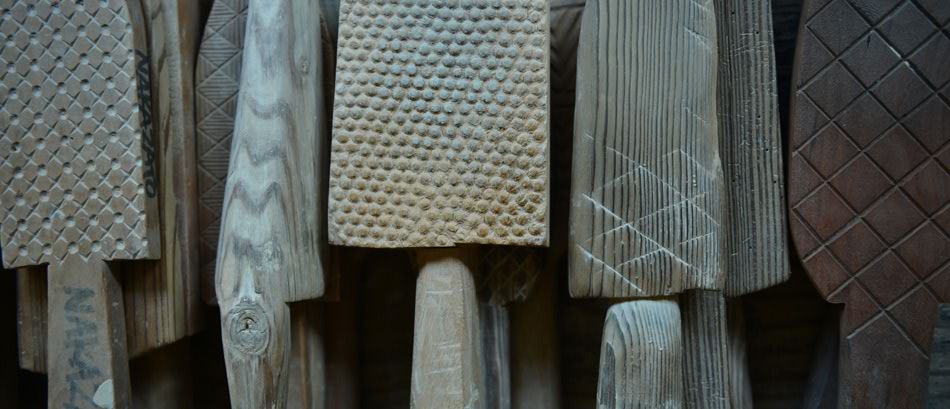What goes into a pot?
What goes into Karatsu ware is of particular importance in giving it its distinctive character, and potters are fastidious about choosing their materials. While other pottery centers have streamlined and specialized their material processing and production processes, many Karatsu area potters individually build their own wood fueled kiln, collect their own materials from the surrounding mountains, crush and levigate the stones and clay, burn plant material to make their own ash, and mix their own clay and glazes using all of these materials they processed themselves. They then form and decorate the pots, apply glazes, and load and fire the kiln, always with the primary goal of bringing out the natural beauty of the materials.
By eschewing modern technology, and controlling all aspects of the pottery making process themselves, Karatsu potters may not necessarily achieve the highest efficiency, however this approach is the key to creating one of a kind works of art based on the rich variation of glazes, decoration, and form found in the example of old Karatsu ceramic ware, the creation of which would be otherwise impossible with modern mass production technology.
HOW KARATSU WARE IS CREATED
- Clay
Much of the appeal of Karatsu ware comes from its clay. The old kilns of Karatsu all exhibit distinct clay expression and form in their wares, which speaks to the wide range of materials used.
※Tsuchimise (Showing the bare clay): A part of the pot where the bare clay is visible, usually around the foot. The foot of the pot is a particular area of interest in Karatsu ware.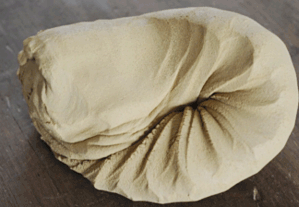

- The Potter's Wheel
A traditional Karatsu style wheel consists of a thick wooden wheel head connected to a fly wheel with wooden stretchers, which is fitted over a stationary vertical axle, and turned by kicking or treading the fly wheel. Today, electric wheels have become quite common, but there are still many potters in the Karatsu area who use a traditional kick wheel.
※The Coil and Paddle Technique
For constructing pots and jars, coils are rolled out and stacked up to create the vessel. A small wooden anvil is held in the vessel for support, while a wooden paddle is used on the outside of the form, which is paddled to thin out and strengthen the wall of the vessel. A kick wheel is often used in this process.
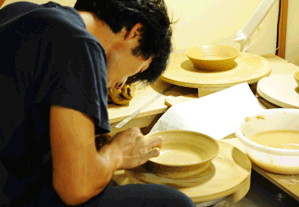

- Trimming
The piece is trimmed naturally, to refine the form and/or for decorative effect. 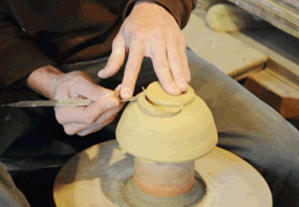

- Bisque
Depending on the clay body or intended glaze, ware may be bisque fired to about 800C (1470F) for durability and ease of handling.
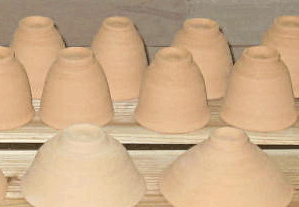
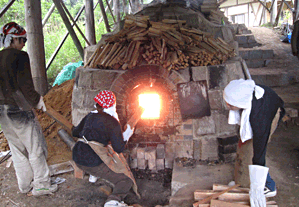

- Brush decoration
Iron pigment applied by brush or finger will come out brown to black in the firing.
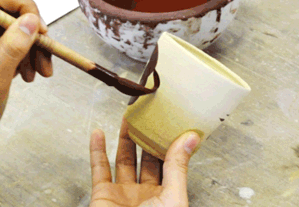

- Glazes
Glazes are composed of crushed stone, plant ash, iron, etc., suspended in water as a slurry. The color of the glaze depends on the materials and percentages used. Glazes are applied to raw or bisque fired ware by dipping or ladling. Depending on the shape of the piece, various other methods may be employed.
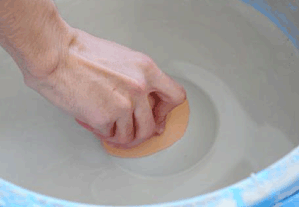
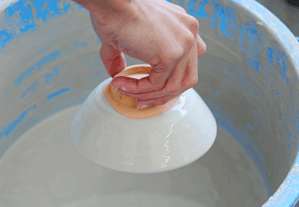

- Loading the kiln
Pieces are carefully loaded one by one. This step is vitally important to the final product, and every potter is fastidious about how it proceeds.
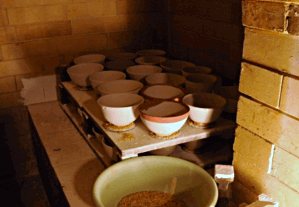

- Firing
Most Karatsu ware is fired at temperatures of 1250C – 1300C (2280F – 2370F), in a Noborigama (※), gas kiln, or electric kiln. The fired color of the final product varies greatly depending on the firing method.
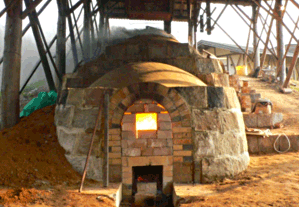
The noborigama, or climbing kiln, is a type of wood kiln built on a slope. Size and shape vary greatly, but they are generally quite heat efficient and suited to large-scale production. Introduced to the region toward the end of the 16th century, the highly efficient noborigama quickly gained mainstream acceptance. It can be fired to temperatures exceeding 1300C (2370F).
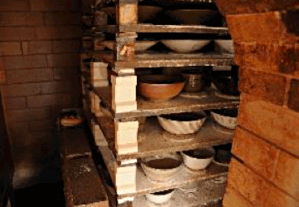
※Noborigama Cooperation: Hito-Mono-tsukuri Karatsu Project of Saga University
Cooperation: Hito-Mono-tsukuri Karatsu Project of Saga University
Professor Yuhki Tanaka / Studio Shirotani / Chiaki Inoue / Takeshi Endo / Naoto Yano /
Akira Yamaguchi / Masanori Jo / Akiko Setoguchi

